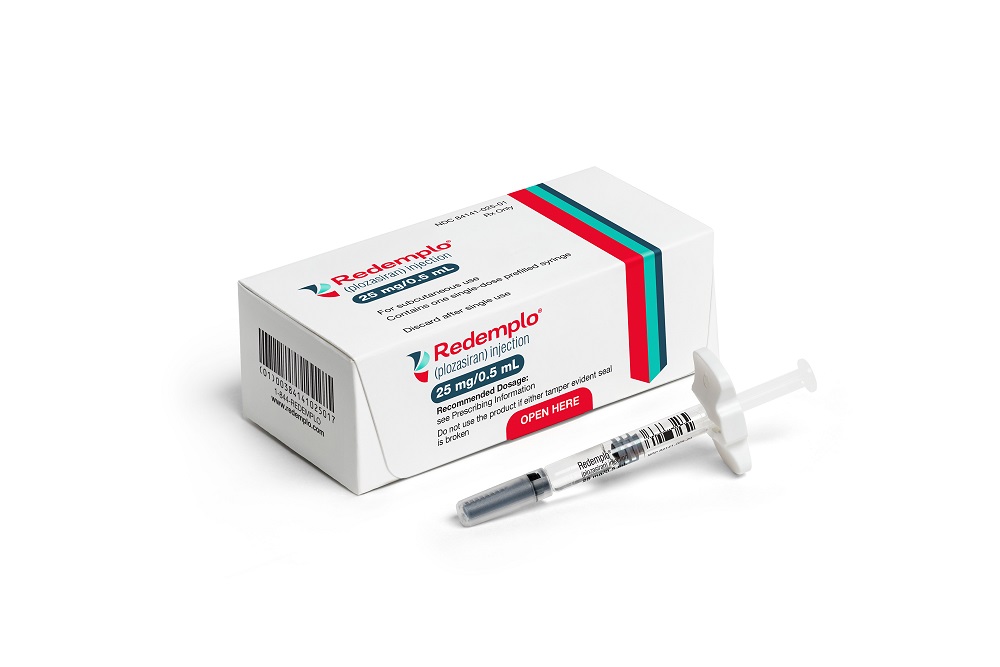
An Arrowhead Pharmaceuticals RNA drug has passed the regulatory bar for treating a disease that leads to dangerously high levels of fat in the blood, marking the first FDA approval for the company and the second product approval in the past year for this rare metabolic disorder. But even though Arrowhead’s genetic medicine is second to market, the biotech aims to stand apart from rival Ionis Pharmaceuticals with a commercialization strategy that highlights key differences for both patients and payers, in this disease as well as in future indications.
The indication covered by the Tuesday FDA regulatory decision is familial chylomicronemia syndrome (FCS), a genetic disease that leads to extremely high blood levels of triglycerides, a type of fat. Arrowhead’s drug, known in development as plozasiran, will be commercialized under the brand name Redemplo.
FCS stems from impaired function of an enzyme important to triglyceride metabolization. The disease, which affects an estimated 6,500 people in the U.S., leads to fatigue, severe brain fog, and recurrent abdominal pain. The most serious FCS complication is sudden inflammation of the pancreas called acute pancreatitis. About 93% of these episodes involve an inpatient stay; the average stay is 10 days, Arrowhead said in an investor presentation. Each pancreatitis attack costs an estimated $60,000 per episode.

NEMT Partner Guide: Why Payers and Providers Should Choose MediDrive’s TMS
Alan Murray on improving access for medical transportation.
The standard way to manage FCS is restricting fat intake. The FDA approval for Redemplo in adults still requires patients to maintain a low-fat diet, but the drug brings a genetic approach to the disease. Arrowhead’s RNA interference (RNAi) drugs use small interfering RNA (siRNA) to suppress production of a disease-causing protein. Redemplo is specifically designed to suppress production of apoC-III, a liver protein that raises triglyceride levels by slowing the breakdown and clearance of these fats.
The FDA decision for Redemplo is based on the results of a placebo-controlled Phase 3 study whose main goal was measuring the percent change in fasting triglycerides from baseline to month 10. Results showed a 59% percent median change for the treatment arm compared to the placebo group. The most common adverse reactions in the study included high blood sugar levels, headache, nausea, and injection site reactions. Detailed results were published last year in the New England Journal of Medicine and in Circulation.
The first FCS drug to reach patients was Ionis’s Tryngolza, which the FDA approved last December. Tryngolza, which belongs to a different class of genetic medicines called antisense oligonucleotides, reduces levels of the same liver protein addressed by Arrowhead’s drug. While both Tryngolza and Redemplo are self-administered by patients via autoinjectors, the Arrowhead drug’s every three month injections are less burdensome compared to the monthly injections required of the Ionis drug. Arrowhead also claims a safety edge with a label that lists no warnings or contraindications. By contrast, the Tryngolza label warns of the risk of hypersensitivity reactions, which were the most common reason patients discontinued treatment in that drug’s clinical trials.
Pricing might be the starkest area of contrast between the two drugs. As the first FCS therapy, Tryngolza came with premium pricing: $595,000 a year wholesale. For the nine months ended Sept. 30, Ionis reported $57.3 million in Tryngolza revenue, the first product Ionis has commercialized without a partner.

Transforming the OR: CEO Reveals Game-Changing AI Tech for Better Efficiency
How Apella leverages technology to increase OR efficiency.
While FCS is a small indication, Arrowhead and Ionis are also testing their drugs in the more prevalent severe hypertriglyceridemia (SHTG). Like FCS, SHTG is characterized by high triglyceride levels, but its cause comes from a combination of genetic, medical, and lifestyle factors. An estimated 3 million people have this disorder; about 1 million have high-risk SHTG which raises the risk of acute pancreatitis.
In SHTG, Ionis has said Tryngolza could be priced at around $20,000. Arrowhead is taking broader pricing approach. Speaking during a Tuesday conference call, CEO Chris Anzalone said that more than being an FCS therapy, Redemplo treats pancreatitis regardless of its cause. The company will not ask different patients to pay different prices for the same drug, he said. Redemplo’s annual $60,000 wholesale price in FCS will be the same for SHTG and any other potential future indications of this drug.
“Ultimately, the large economic opportunity here is in the SHTG population, and so it’s critical that we get the right price for that, and if that means that we give up some short-term revenue in FCS, we view that as an investment in the future,” Anzalone said. “The real economic opportunity here, and our focus, at least in terms of economics, is making sure that that is properly priced, and the way we look at it, the initial population here is the high-risk SHTG patients.”
Arrowhead’s price for Redemplo was a surprise, Leerink Partners analyst Mani Foroohar said in a note sent to investors. Foroohar said the labels for the two FCS drugs are largely similar, with the main difference being the dosing frequency. The lipid knockdown for the Arrowhead drug was greater, but cross-trial comparisons are always challenging. Foroohar noted that the timepoints for this measure was month 10 for the Arrowhead drug and month 6 for Ionis’s drug.
Near-term uptake of these products will be driven by commercial execution as well as pricing and access, Foroohar said. Based on Leerink’s discussions with clinicians, excitement is high for both drugs. Physicians see the safety profiles as manageable, and the firm views the triglyceride-lowering opportunity split between the two drugs. Leerink is watching for Ionis’s data readouts and pricing strategy for Tryngolza in SHTG.
Arrowhead frames Redemplo as having multi-billion-dollar revenue potential across multiple indications. The company expects the drug will become available to FCS patients by the end of this year. As for commercialization of the drug globally, Anzalone said Arrowhead is open to finding a partner for the drug but is not dependent on one.
Photo by Arrowhead Pharmaceuticals






